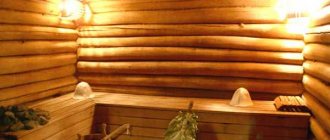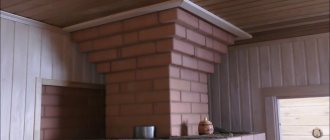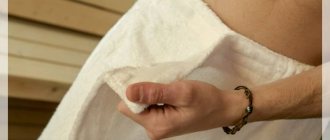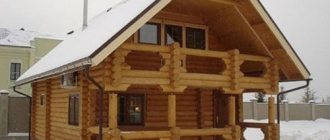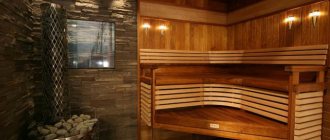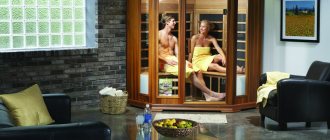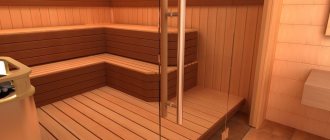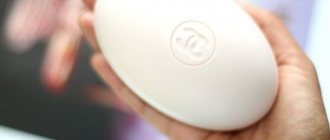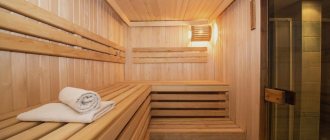Ruslan Konovalov
Visiting the sauna is a pleasant and relaxing procedure. Almost every dacha has such a building where you can relax and relieve the burden of problems. To create comfortable conditions, you need to take care of the lighting in the bathhouse, taking into account the specifics of the room.
Humidity and high temperature impose restrictions on the use of a number of lighting devices. An excellent solution would be an LED strip for a sauna, because it is not afraid of water and can be easily installed in hard-to-reach places. In a steam room where the temperature is high, heat-resistant LED strip is well used.
Is heat-resistant LED strip dangerous?
Every establishment owner is concerned about the safety of their lighting. Therefore, more and more people are inclined to use heat-resistant LED strips in saunas. The structural elements of the strip are protected from moisture; immersion in water is permissible (the main part, without connection ends).
Power is supplied by low voltage direct current (12 V). Such tension is safe for humans; staying in the steam room will not harm the body.
Conventional light bulbs require grounding when installed. And the LED version, if a stripe breaks down, is not dangerous to humans, electric shock will not occur.
Useful video on the topic:
Design and characteristics of LEDs
The design of the LED matrix lamp is fundamentally different from all previously known light sources. Structurally, an LED is a semiconductor device several millimeters in size, imprinted into a board; there are also contact tracks and interface elements with other LEDs. Therefore, LED lighting in a bathhouse is always a large number of point semiconductors on a substrate, covered with a cap or protective film. The classic version looks like a small cylinder, 5 mm in diameter, with a diverging lens at the top.
LEDs are extremely sensitive to moisture and overheating
More modern LED emitters are made in the form of a thin rectangular plate in which several semiconductor crystals are combined. As a result, the LED strip fits more crystals, and its brightness only increases.
LED strip for bath lighting
The most important characteristics include:
- Operating current and supply voltage. A single LED chip is designed for a constant voltage of 2.5-4 V and a current of 20 mA. Energy consumption is record low, and due to the low current and voltage, installing an LED strip in a steam room or even in a washing compartment is the safest for people;
- Flow angle. Thanks to the profiled surface, the LED crystal can emit radiation with a flux opening of up to 140°. This means that the tape, laid on the ceiling or wall surface of a bathhouse or steam room, is capable of illuminating the room from floor to ceiling;
- The resource of the LED strip, even in a steam room, is more than 10 thousand hours;
- Energy efficiency depends on color. The most effective are white LEDs, followed by red and green LEDs. The worst converters of electricity into light are blue and violet emitters.
Important! The cost of an LED lighting system will be much more expensive than in the case of using classic incandescent lamps, but taking into account the high service life and reliability of the semiconductor emitter, it is more profitable to install LED lamps in the bathhouse.
At first glance, the design is very convenient, especially for organizing non-directional lighting with an LED strip in a bathhouse; you can safely change all the antediluvian incandescent light bulbs, especially unsafe housekeepers.
Features of creating lighting in saunas and baths
When lighting work is carried out, it is necessary to take into account the specifics of the room:
- The cable footage is calculated with a margin to avoid additional connections.
- The wire is pulled through the inside of the open line.
It is better to output power through rooms where there is no high humidity or temperature.
It is necessary to take into account the nuances when choosing an LED strip. It must be heat-resistant, that is, contain a certain coating, IP65, IP68 protection. The steam rooms use a heat-resistant type that can withstand elevated temperatures. And in the rooms where showers are located, the LED strip is sealed, preventing the flow of water.
Installation of LED strip for saunas and baths is easy. In rooms where there is no humidity (rest room, locker rooms), the tape is attached to an adhesive base, and in steam rooms and showers with special fasteners.
Maximum operating temperature
The silicone case itself provides additional protection from extraneous high temperatures. At the same time, it is very flexible and bends at any angle without any problems.
As a result, such illumination can be used in a wide temperature range - from -40C to +100C!
That is, using a bathhouse or sauna in a steam area will not affect its normal operation.
Those who do not believe in the endurance and heat resistance of such a product can easily conduct an independent experiment.
It is enough to boil a saucepan of water and place an LED thermal strip turned on at a nominal voltage of 24V.
You can cook it in boiling water until all the water has evaporated. The tape will feel quite fine.
Advantages and disadvantages
People perceive the sauna as a place where they can relax not only physically, but also mentally. Properly designed lighting will help make the procedure complete.
Heat-resistant LED strip has a number of advantages:
- Energy efficiency (consumption is ten times less than when using a conventional light bulb, 2 times less in comparison with the fluorescent version).
- Ease of installation and connection.
- Long operational period.
- Great glow.
- Variety of shadow designs.
- Contains the protection level.
- Safety for humans.
- Suitable for illuminating underwater space (swimming pool).
Heat-resistant tape, unlike other types, has no disadvantages. A regular LED strip operates at temperatures of -30 – +60 degrees. But in the sauna area, the bathhouse, the temperature is higher, so only a heat-resistant design is applicable. In it, the diodes are coated with two-component silicone, resistant to elevated temperatures.
We recommend videos on the topic:
How to cut, seal and fasten
Now let's take a closer look at the points regarding how to work with such LED backlighting.
Firstly, how to cut it correctly. After all, it is in matte silicone protection. Secondly, what can be used to hermetically seal the second cut end.
Indeed, the cover completely covers the entire tape, which is why the factory cut points are not visible. Let us remind you that they are indicated by special icons.
You'll have to experiment here. Measure the length of the backlight you need and use a utility knife to make an incision half the thickness of the “tube.”
The depth of the cut should be sufficient to see the outside of the substrate. Pull the silicone apart and look inside.
If you didn’t guess correctly and don’t see the cut mark, then move to the right or left and make another cut.
And repeat this until the treasured icon appears.
When you reach it, it is in this place that you cut off the thermal tape.
After this, this end with cuts must be sealed with silicone sealant and closed with a special plug.
It is recommended to pour a little sealant into the plug itself.
After drying, its excess can be easily cut off with a stationery knife.
What sealant should I use? Vinegar based is best.
It does not cause corrosion of copper traces on the substrate.
If you do not have factory silicone plugs or have run out, take an ordinary heat-shrink tube and place it on the end of the tape.
After that, pour silicone sealant inside again and seat the tube.
It is better to do this with a hairdryer, since fire changes the color of the heat shrink and it can become smoky.
This LED strip is attached to any surface using soft silicone brackets.
If you couldn’t find them on sale, use “liquid nails” type glue.
You can also use metal clips. Plastic ones are not always appropriate here. The main thing is to choose them correctly according to the diameter of the silicone case.
Choosing the correct location of the tape in the sauna
The location where the heat-resistant LED strip is attached in the sauna is determined by the safety of visitors and fire safety measures. Therefore, when installing the wire, you need to consider:
- Wire cross-section, which is purchased with a reserve, taking into account the specifics of the establishment.
- Avoid soldering areas that could cause a fire.
During installation, in addition to the strip, you will need:
- Adapter (installed every 5 meters of strip).
- Controller (if it is necessary to switch colors).
- A plug that is installed at the end of the ice tape with heat-resistant sealant.
- The connector is connecting (fastening is made with heat-resistant sealant).
Installation procedure
Install the tape in the following order:
- Calculate the total power of the structure.
- Install a power supply with a power reserve of 15-20% outside the steam room and wash room (in the rest room or dressing room). They also put a switch there.
- Connect the tape to the controller according to the designations B, G, R, V+.
- Clean, degrease and insulate the surfaces for installing the tape.
- Remove the protective film and fix the ice tape on the surface. If you need to shorten it, cut it off in the marked places with stationery scissors.
- Connect to the power supply, being sure to observe the polarity.
It is clear that installing light in a bathhouse is not difficult. Spend a little time choosing equipment, installation and enjoy the result of your labors for a long time.
LED strip lighting options
The placement of ice strip lighting is available in several options, each of which brings individuality to the room. A cozy atmosphere is achieved by highlighting the shelves and backs with blue and white tape.
It is not recommended to backlight in red; it looks aggressive and annoying.
At the same time, illumination can be carried out with other lighting devices. You just need to take into account that they are also heat-resistant.
Each shade gives the room personality. Just don’t overuse it and hang too many stripes, and even in different shades. This will only frighten visitors and prevent them from relaxing.
What lamps can be used
When choosing lamps, first of all you need to pay attention to the dust and moisture protection class. The higher the class, the better. The ideal option is IP68. It is necessary to choose lamps whose housing construction does not use plastic or other materials that cannot withstand high temperatures. The best case is made of iron, ceramics and glass. Such materials withstand heat well and are suitable for baths. Lamps must be protected from moisture by sealing gaskets on threaded connections. Wall lamps with an E27 base from Lindner are suitable; they are very popular and are used in saunas.
Built-in spotlights in the floor and benches are allowed. To add mystery to the atmosphere, you can cover the light bulb with a platband or hide the lighting fixture under a wooden lampshade. You can install an ice lamp of a suitable base in any of the lamps described above.
Tips for using diode strips for a bath
If the installation is carried out in accordance with all the rules and regulations, then no additional maintenance is required, and the structure will last a very long time. But in order to increase the operating period, it is worth considering a few tips:
- All thermal strips must correspond to the temperature conditions of the room.
- Installation is carried out in places that exclude the touch of visitors.
- The location should minimize aggressive effects (not near the boiler, ceiling, etc.).
Can LED lamps be used in a bathhouse?
The idea is tempting, but not everything is so simple. Modern LEDs were designed for operation in conditions of normal humidity and air temperature; only some models for industrial use can be operated in conditions of temperature changes and record high humidity without loss of initial characteristics. Such LEDs cost 2-3 times more than regular ones, so for a bath it makes sense to use standard models, otherwise it’s not worth the candle.
An ordinary LED lamp will withstand heating up to 100°C, although not for long
Advantage of LED strips
The main advantage of using strip lighting is low energy consumption. And the point here is not even about saving electricity; the extra 150 W saved on the LED strip will not affect the energy balance of the bathhouse.
The main advantages of installing LED lighting in a steam room are as follows:
- The power supply has built-in protection, so if the insulation of the wiring from the step-down transformer to the LEDs on the strip is broken for some reason, this will not become a threat to those in the steam room;
- The LED strip can be cut from a skein according to the footage required for the necessary equipment of the ceiling lamp. This is convenient and profitable, especially if there is no specific plan for building a lighting system, and you have to experiment with different schemes.
In addition, the strip lamp makes it possible to use three main colors for lighting the bath - green, blue and red. It seems like a trifle, but for a fairly dark steam room, the ability to choose the most comfortable intensity and tone of light is important.
Another thing is whether it is possible to install LED lamps in a bathhouse depending on the operating temperatures and humidity.
Lack of LED products
There are perhaps even more negative qualities of LED lamps than advantages. For example, semiconductor devices are extremely sensitive to high temperatures. This means that if the LED strip heats up to 110-120°C, then the risk of breakdown increases by an order of magnitude. This may not lead to the burnout of the entire strip backlight, but the service life will decrease significantly.
The second, perhaps more important, disadvantage is the high sensitivity to supply voltage. Any voltage fluctuations negatively affect the light output of the strip lamp. To prevent the light from flickering in the bathhouse, the power supply uses a current and voltage stabilizing circuit. If the power module supplies more than 5 V voltage to the LED, then the emitting crystal will “burn out” quite quickly. Working the required 20 thousand hours in a bathhouse is out of the question.
The third drawback is related to the specifics of the human eye’s perception of the flow emitted by an LED lamp. The LED produces a fairly powerful flux, but its spectrum is very narrow.
Blue is not the best color for steam room lighting
Important! Most bathhouse owners claim that if there are no other light sources in the steam room except the strip, then the room seems poorly lit, the LED strip shines brightly, but everything seems to remain in semi-darkness.
In this case, there is only one way out - use a three-color LED strip lamp or select a strip with a glow temperature of no higher than 4000oK. This roughly corresponds to the luminous flux of fluorescent lamps.
Installation features
Let's consider the rules for installing LED lighting in a bathhouse, based on the fact that we will have an LED strip for a bathhouse as a light source. Any installation activities should be preceded by calculations and tape selection. Let's start with this.
System calculation
According to technical specifications, LED strips are produced in reels or cassettes of 5 meters. Depending on the specific model, this length can accommodate from 30 to 120 LEDs of varying power. The tape can be cut in order to use it to illuminate a specific area, but it is worth remembering that the number of LEDs on the working segment must be a multiple of 3, and the cutting locations are indicated by the manufacturer directly on the product itself.
Since the tape is not powered directly from a household network, it is necessary to calculate the power of the power source. To do this, you need to multiply the rated power of one meter of the product by the length on which the LED strip will be laid. Example: the lower zone of the steam room shelf will be illuminated at a length of 3 m. For these purposes, an LED strip with a supply voltage of 12 V and a rated power of 4.8 W/m in a coil, with a total length of 5 m, was purchased. We cut the required length at the place indicated by the manufacturer and calculate total power consumption: 3×4.8 = 14.4 W. For correct operation of the system, it is necessary to accept an excess power reserve of 20% of the power supply. We calculate the adjusted power of the power supply 14.4 W + 3 W = 17.4 W. The selection of a ready-made power supply is carried out from the one closest to this power indicator, but not less than it.
An important part of the calculations is the assessment of the level of illumination from LED sources. Practice shows that in domestic conditions, an incandescent lamp with a power of 100 W initiates a luminous flux of 1200 - 1300 Lm, sufficient for 8 - 10 sq.m. usable area with a ceiling height of about 250 cm. The light output of LED elements is approximately 50 - 85 Lm with 1 W of power. It is quite obvious that the living conditions of the apartment in terms of illumination intensity are superior to those in the steam room of the bathhouse, where light is necessary for orientation in space and creating visual effects. Accordingly, light output will be quite sufficient within 20 - 25% of what is required in a residential area.
LED lamps for baths and steam rooms
The best option for lighting fixtures for a steam room would be LED lamps with a standard E27 base. This scheme greatly simplifies the installation of a moisture-proof lamp on the walls and ceiling of a bathhouse, since most models are designed for exactly this standard. And besides, the control unit is located inside the base, so there is no need to look for a place to install electronics outside the bathhouse.
You can distinguish a heat-resistant LED lamp from a regular one by the ribbed aluminum side surface. This is a kind of radiator that helps avoid overheating.
Waterproof LED lights for baths
To equip the lighting system inside a bathhouse, two main models are used:
- If there are no special claims to the originality of the design, it is best to use lamps from the French brand “Lindner Lisilux”. The lampshade is made of heat-resistant glass, there is a silicone seal, and the body is ceramic. The average price is no more than $10;
- Uniel LED lamps can be used for washing departments and Turkish baths. The metal body and heat-resistant glass ensure the LEDs operate even in conditions of 100% air humidity.
In both cases, the power of the LED matrix is limited to 60 W, this avoids overheating of the electronic components inside the lamp. For saunas and steam rooms, you can use waterproof lamps of the DBO or NBO series, but the appearance and design of such lighting devices are more suitable for industrial facilities than for a home bath.
